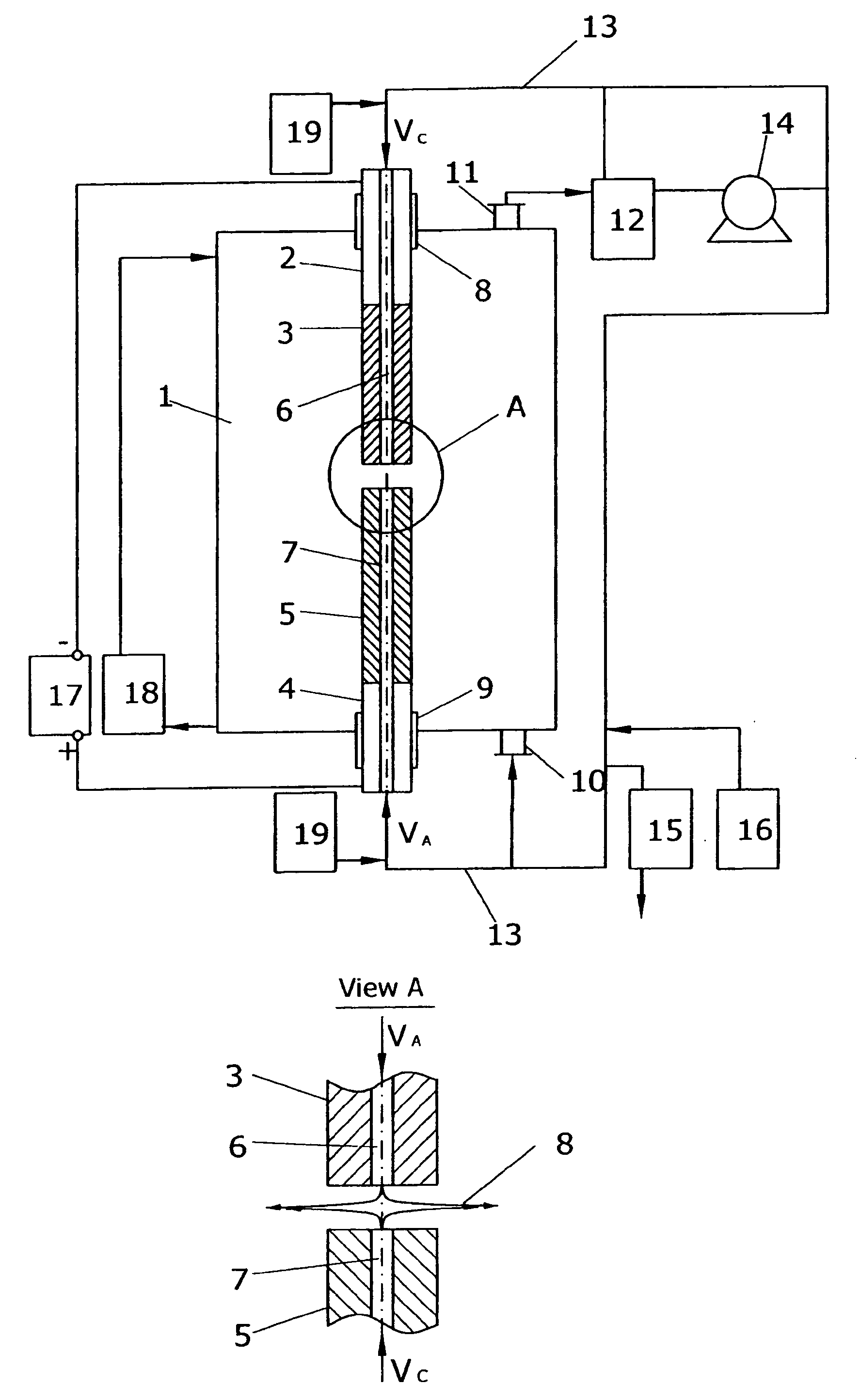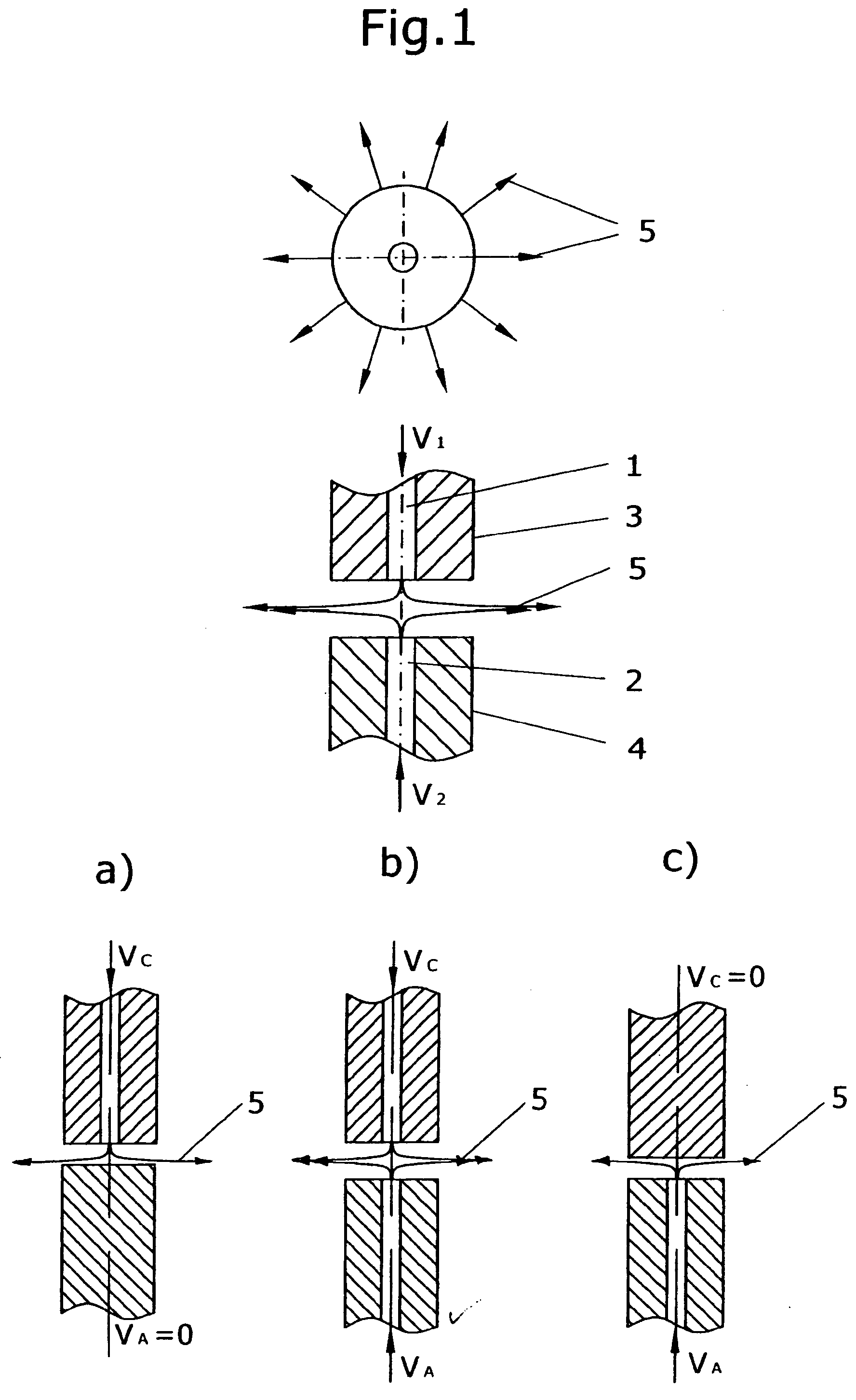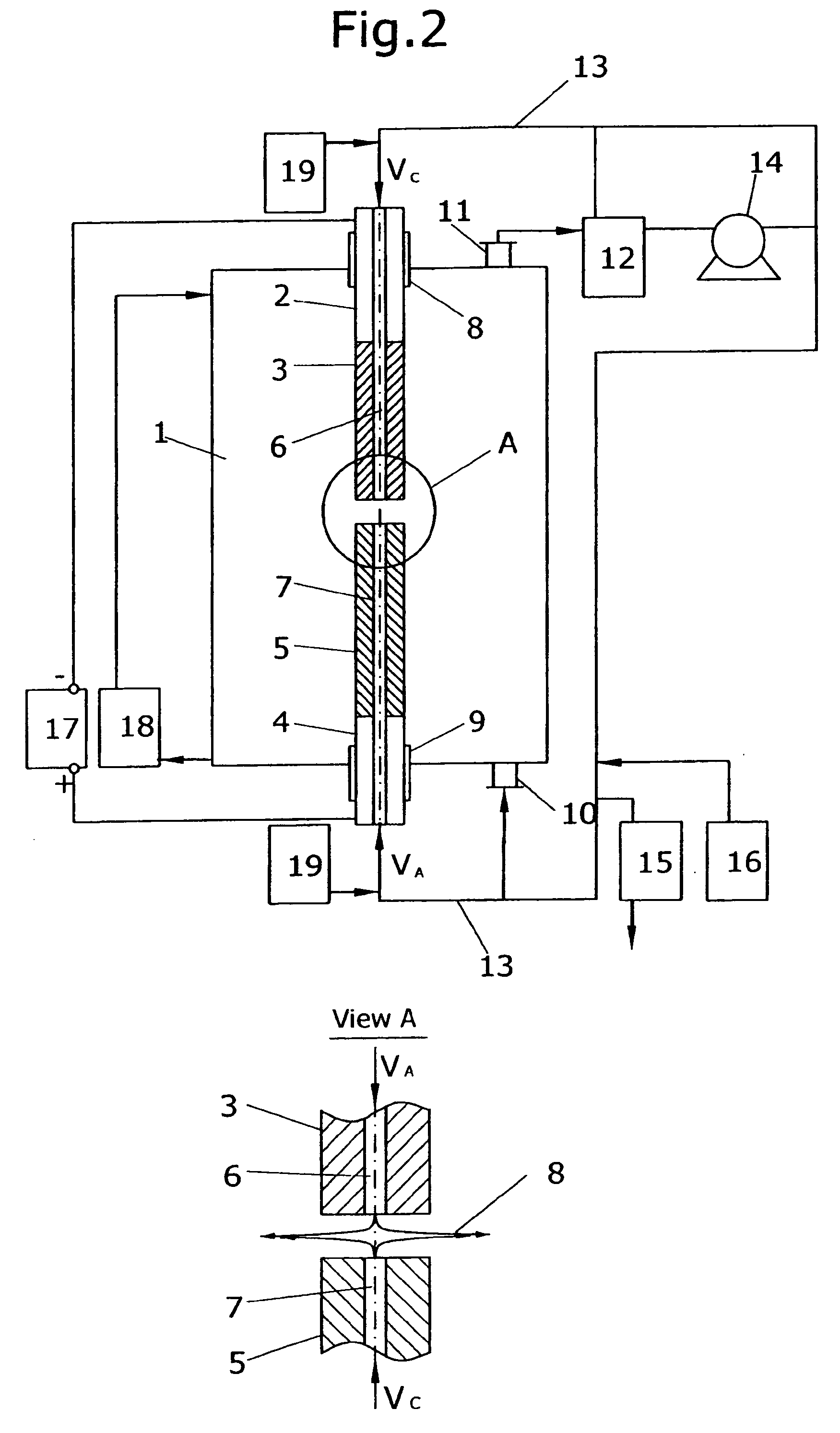Method and apparatus for carbon allotropes synthesis
a carbon allotrope and synthesis technology, applied in the field of carbon allotrope synthesis, can solve the problems of low production rate, low production rate, and insufficient production rate to organize large-scale industrial process to produce fullerenes in large quantities and low price, and achieve the effect of easy and inexpensiv
- Summary
- Abstract
- Description
- Claims
- Application Information
AI Technical Summary
Benefits of technology
Problems solved by technology
Method used
Image
Examples
example 1
[0055] Process of fullerene synthesis was accomplished using the apparatus shown on FIG. 2. Reaction vessel with internal diameter 235 mm and length 600 mm was used. Both cathode and anode were made out of 580 Grade Graphite purchased by “Carbide / Graphite Group” with diameter 13 mm. Cathode had single central inner gas channel 1.5 mm in diameter. Initial masses of cathode and anode were measured and electrodes were attached to the corresponding electrode holders. The reaction vessel was assembled and purged by buffer gas according to the procedure described above. Helium of Zero Grade with the flow rate of 7.5 L / min was injected to the hot plasma zone through the single cathode channel, providing radial gas outflow. Reaction vessel pressure was maintaining at the level of 780 Torr.
[0056] Electrical current of 300 A, 29 VDC was applied to the electrode holders. The constant gap of about 5 mm between electrodes was automatically maintained during the process by adjusting of electrode...
example 2
[0058] Example 2 was performed at exactly the same manner as the Example 1. Various levels of radial gas outflow were applied. The results are presented in the Table 1.
TABLE 1AnodeRadialmassCol-gasevap-CathodelectedFullereneFullereneSampleoutflow,orated,deposit,soot,yield,productivity,#L / minggg% massg / hour1052.227.723.11.60.72148.325.222.34.72.13346.516.828.410.66.044.547.113.632.613.99.157.542.77.134.316.111.0
[0059] Table 1 indicates significant positive influence of radial gas outflow on the fullerene yield and fullerene productivity. Radial gas outflows more then 7.5 L / min were tended to blow up the arc. Radial gas outflows below 3 L / min were not enough to move carbon vapor effectively out of the hot plasma zone. In this case central cathode inner gas channel was partly blocked by growing deposit and was blocked completely at the absence of radial gas outflow.
example 3
[0060] Example 3 was performed according to the same procedure as the Example 1 but different process parameters were applied. Multi-channel cathode design was applied (FIG. 3). Cathode with diameter 25 mm had 5 inner gas channels with round outlets 1.5 mm in diameter each. Anode with diameter 18 mm was applied. All process parameters and results are presented in the Table 2.
TABLE 2Process ParametersHelium flow, L / min40Pressure, Torr800Current, A650Voltage, V34Total time, min12ResultsAnode mass evaporated, g196.4Cathode deposit, g6.3Soot collected, g187.7Fullerene yield, % mass8.9Fullerene productivity, g / hour83.5
PUM
 Login to View More
Login to View More Abstract
Description
Claims
Application Information
 Login to View More
Login to View More - R&D
- Intellectual Property
- Life Sciences
- Materials
- Tech Scout
- Unparalleled Data Quality
- Higher Quality Content
- 60% Fewer Hallucinations
Browse by: Latest US Patents, China's latest patents, Technical Efficacy Thesaurus, Application Domain, Technology Topic, Popular Technical Reports.
© 2025 PatSnap. All rights reserved.Legal|Privacy policy|Modern Slavery Act Transparency Statement|Sitemap|About US| Contact US: help@patsnap.com



